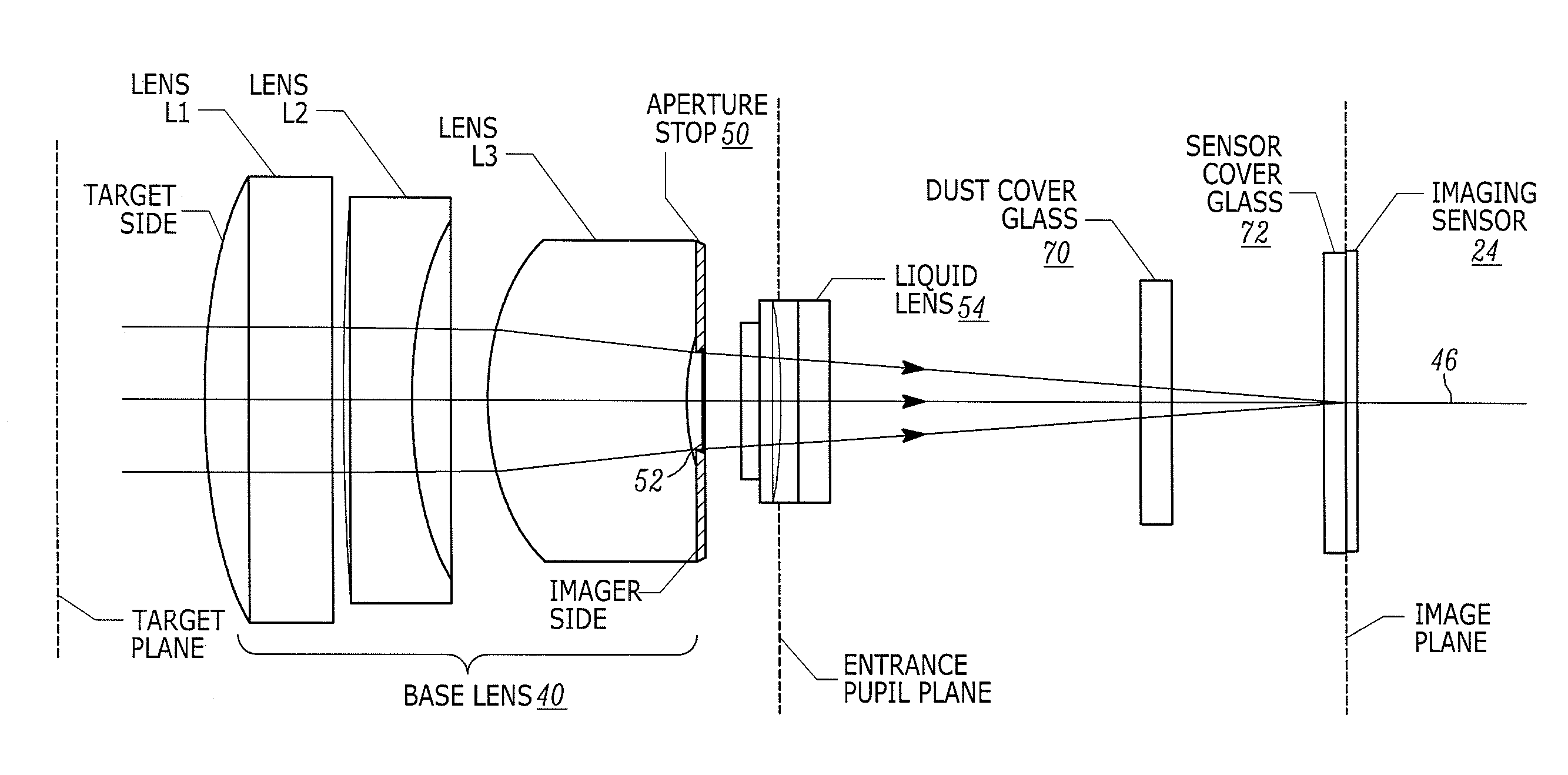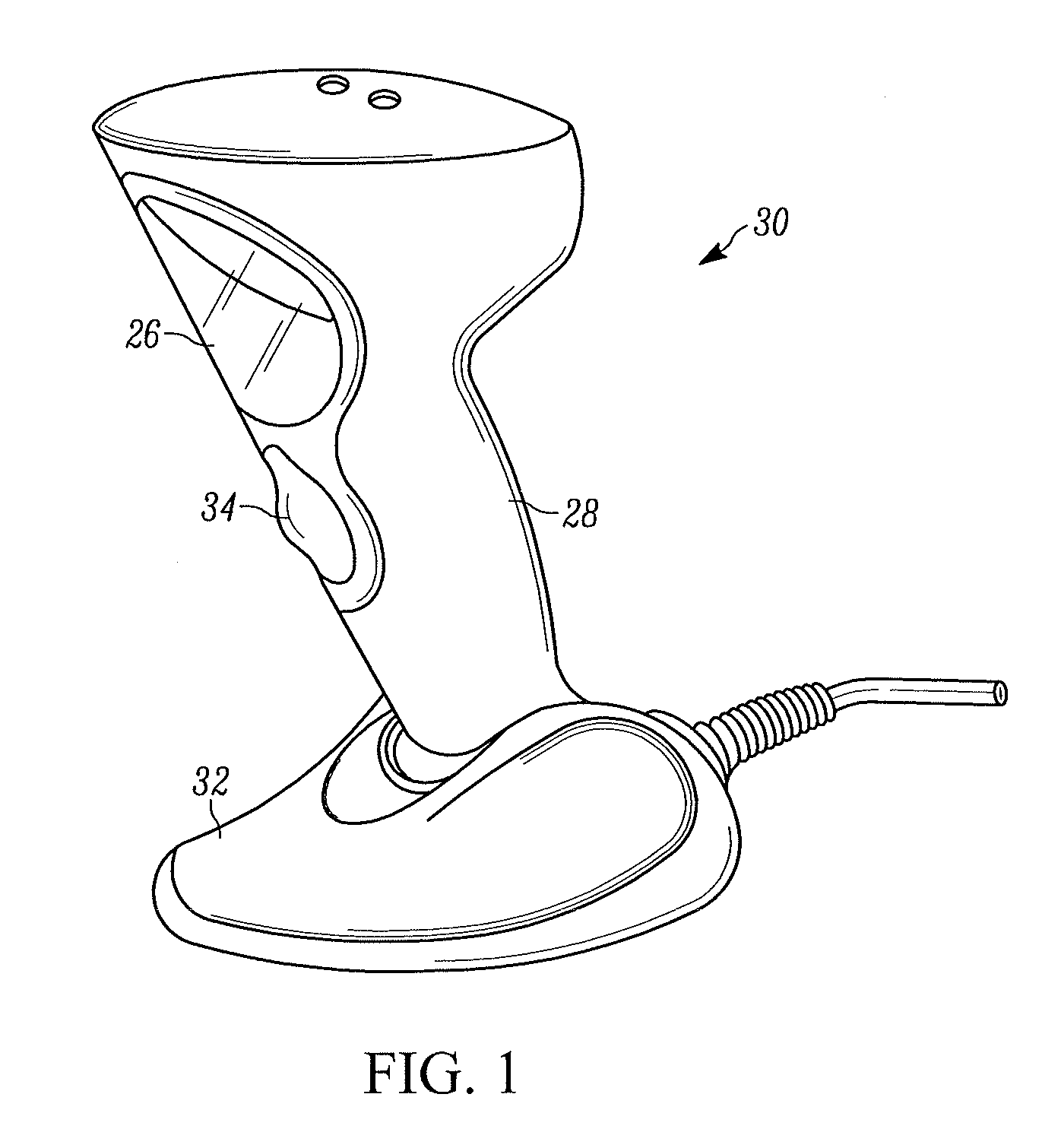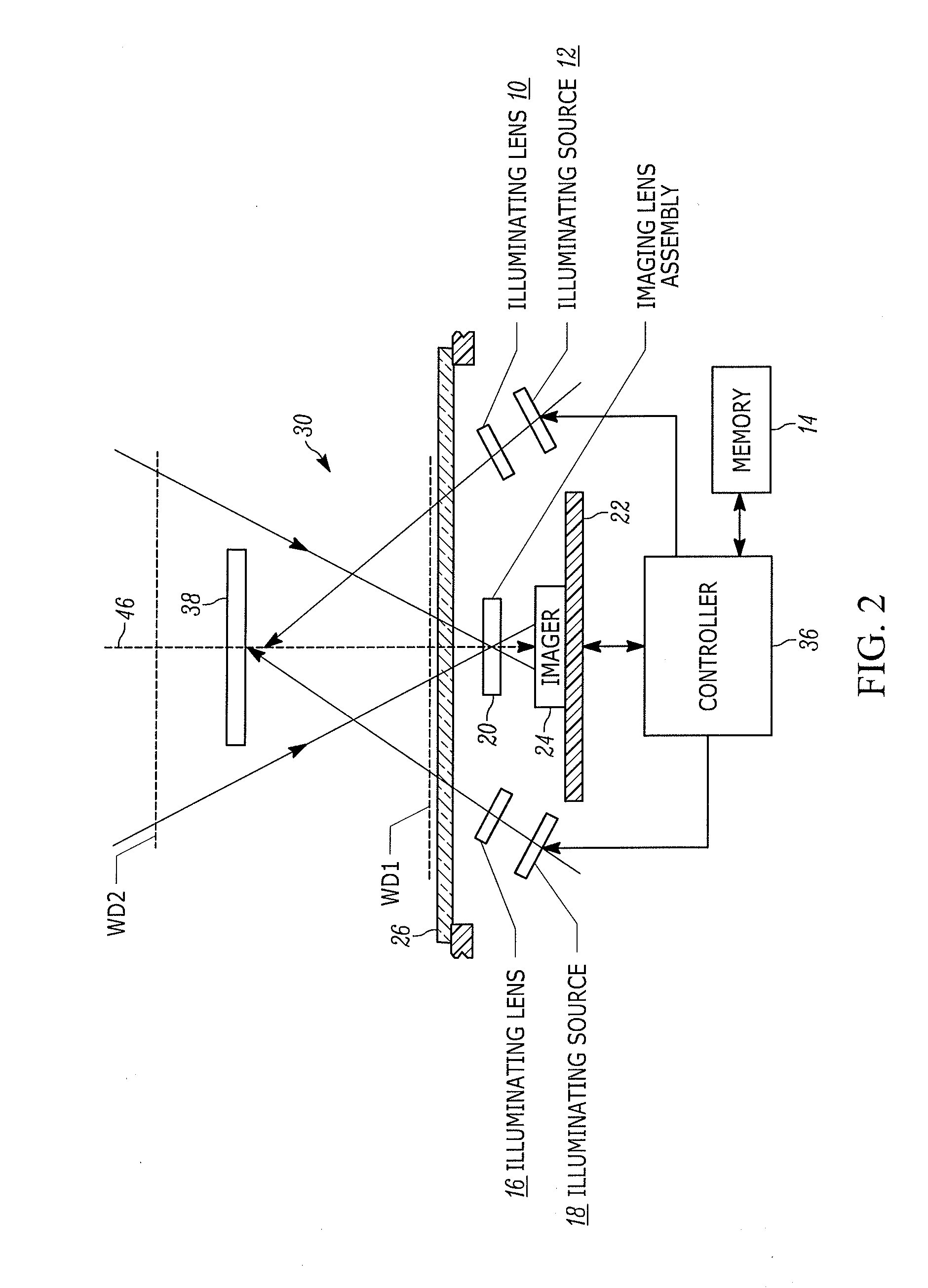Arrangement for and method of imaging targets with improved light collecting efficiency over extended range of working distances
a technology of image capture and light collection efficiency, applied in the field of arrangement for, and a method of, electrooptically reading targets by image capture, can solve the problems of generating dust to obscure the lens, generating objectionable, annoying, and generating a hum
- Summary
- Abstract
- Description
- Claims
- Application Information
AI Technical Summary
Benefits of technology
Problems solved by technology
Method used
Image
Examples
Embodiment Construction
[0015]In accordance with one feature of this disclosure, an imaging lens assembly captures return light from a target, e.g., a bar code symbol, over a field of view of an array of image sensors of a solid-state imager, and projects the captured return light onto the array during electro-optical reading of the target. The imaging lens assembly includes a base lens through which the captured return light passes along an optical axis. The base lens is preferably configured of a plurality or group of lenses arranged along the optical axis. The base lens has an optical power, a target side facing the target, and an imager side facing the imager. The imaging lens assembly also includes an aperture stop in direct surface area contact with the imager side of the base lens. The aperture stop has an aperture through which the optical axis extends and the captured return light passes. The aperture is magnified in apparent size by the optical power of the base lens to form a magnified entrance ...
PUM
 Login to View More
Login to View More Abstract
Description
Claims
Application Information
 Login to View More
Login to View More - R&D
- Intellectual Property
- Life Sciences
- Materials
- Tech Scout
- Unparalleled Data Quality
- Higher Quality Content
- 60% Fewer Hallucinations
Browse by: Latest US Patents, China's latest patents, Technical Efficacy Thesaurus, Application Domain, Technology Topic, Popular Technical Reports.
© 2025 PatSnap. All rights reserved.Legal|Privacy policy|Modern Slavery Act Transparency Statement|Sitemap|About US| Contact US: help@patsnap.com



